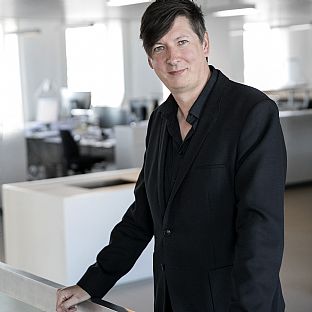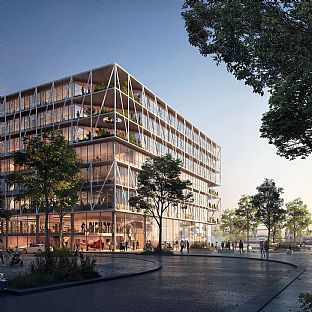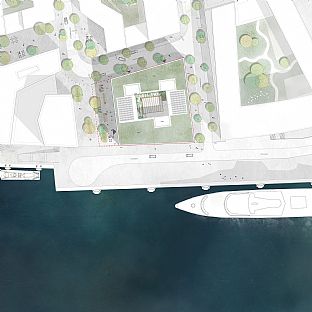The sustainable architectural concept
The building's elements have been selected based on different lifespans, low resource consumption, recyclability, and local production.
The load-bearing frame is made of graded concrete, a new type of lightweight concrete construction, which reduces resource consumption by 30-45%. The other prefabricated building elements in wood, steel, clay, and glass fiber reinforced concrete can be disassembled and reused as requirements change.
In combination with low-energy solutions, such as natural ventilation, good daylight conditions, and a self-shading facade design, the CO2 emissions are reduced by 42% and the building exceeds the requirements for the Hafencity Ecolabel-Platin category, which is the most ambitious sustainability certification in Germany.
"This innovative project sets standards in terms of sustainability through the use of recycling and reusable building materials, as well as the use of gradient concrete for C02 reduction. At the same time, the project with its high architectural standards blends in perfectly with the overall image of HafenCity in the immediate vicinity of the future cruise terminal. With the Medical School Hamburg as a main tenant, a strong link between the city, education and the public will be created in the Strandkai quarter. The outstanding location directly on the Elbe will thus be able to positively affect the everyday lives of thousands of students. We would like to thank all the participating offices for their entries and wish the project team success in the further implementation," says Harald Wüst, Head of Real Estate Development Hamburg, PATRIZIA AG.
About Hafencity
In total more than 2.5 million sqm gross floor area (GFA) is to be constructed above ground. More than 7,500 residential units for around 15,000 residents are being built, as well as business premises offering in excess of 45,000 job opportunities (of which 35,000 will be in offices), plus educational institutions (child daycare, schools, universities), restaurants and bars, retail, cultural and leisure amenities, with parks, plazas and promenades – after overall completion, 80,000 visitors per day are expected.
About Patrizia
Patrizia is leading partner for global real assets, and they offer investors a broad variety of attractive investment opportunities underpinned by over 37 years of experience and rock-solid, up-to-the-minute research.
About MSH
The MSH Medical School Hamburg - University of Applied Sciences and Medical University is a private, state-approved university based in the Hamburg HafenCity. It was founded in 2009 by the Managing Director Ilona
Presse Release HafenCity
HafenCity
Medical School Hamburg (MSH)
Patrizia
Project Description


